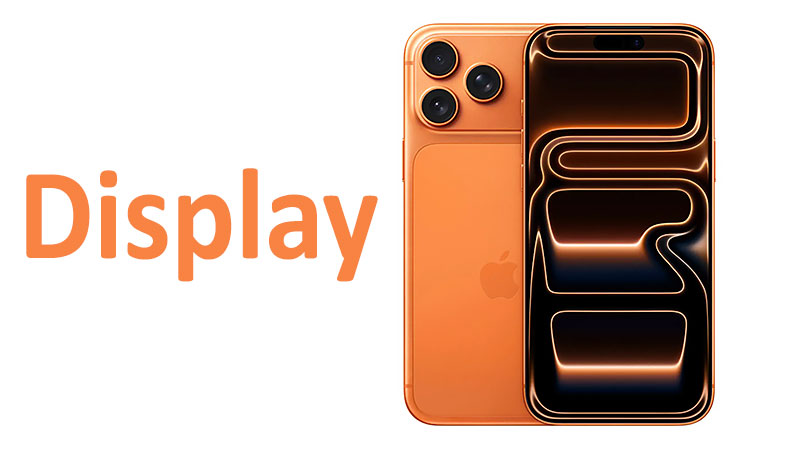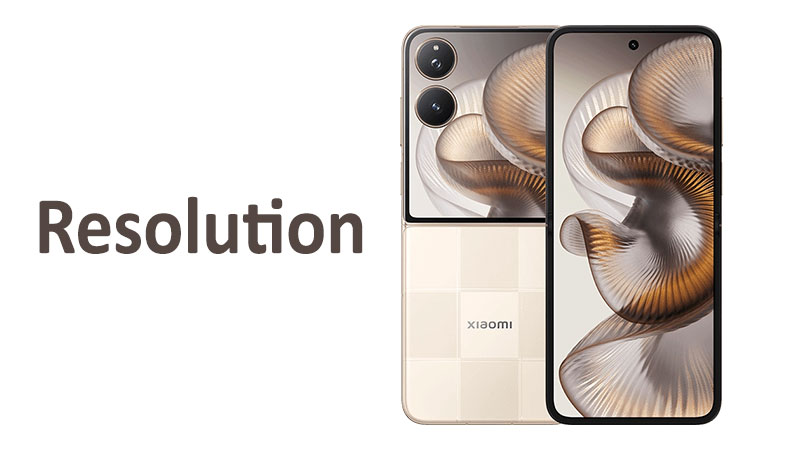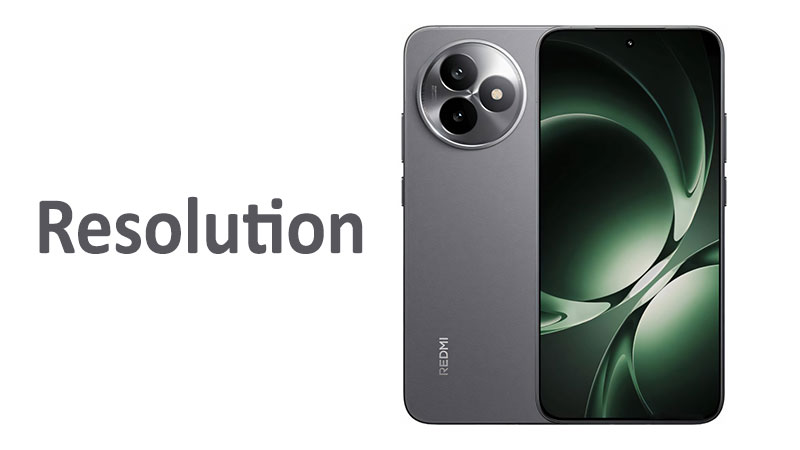The Apple iPhone 17 Pro Max Display is the window to the user experience. It defines how consumers interact with their device. Apple introduces several significant advancements this year. They focused heavily on clarity, efficiency, and durability. This detailed review explores every technical specification. We analyze the features that make this screen stand out. Understanding these elements is essential for all potential buyers.
Core Display Technology: LTPO Super Retina XDR OLED
The foundation of the iPhone 17 Pro Max screen is its panel type. Apple utilizes the LTPO Super Retina XDR OLED technology. This combination of acronyms represents the pinnacle of modern mobile displays. It offers superior color and contrast performance.
OLED Fundamentals
OLED stands for Organic Light-Emitting Diode. These displays use individual pixels that produce their own light. This differs fundamentally from traditional LCDs. LCD screens require a separate backlight source.
The primary benefit of OLED is perfect black levels. When a pixel is black, it is simply turned off. This results in infinite contrast ratios. Colors look vibrant and deep as a result. OLED technology is the gold standard for visual fidelity.
Super Retina XDR: Apple’s Customization
Super Retina XDR is Apple’s branding for its high-performance OLED panels. The “XDR” signifies Extreme Dynamic Range. This means the display can show incredibly bright whites and very dark blacks simultaneously. It optimizes the viewing experience for HDR content.
Apple carefully calibrates every single panel. This ensures unmatched color accuracy. Professional users, like photographers, rely on this color fidelity. The result is visual output that is exactly as intended by the creator.
The Power of LTPO Technology
LTPO stands for Low-Temperature Polycrystalline Oxide. This is the underlying material used in the backplane of the display. The material is key to power efficiency. It allows the screen to dynamically adjust its refresh rate.
Older panels used LTPS (Low-Temperature Polysilicon). LTPO is far more efficient. It is vital for enabling features like the Always-On Display. It allows the phone to preserve battery life while still showing essential information.
Comparison: Non-LTPO OLED screens have limited refresh rate flexibility. They often switch only between 60Hz and 120Hz. The iPhone 17 Pro Max can drop its refresh rate much lower. This adaptive nature provides superior battery management.
Resolution and Clarity: Pixel Perfection
The visual sharpness of the display is determined by its resolution and pixel density. Apple engineered a high-resolution screen for the iPhone 17 Pro Max. This ensures clarity even on the large form factor.
The Resolution Numbers
The display resolution is 1320×2868 pixels. This provides a massive amount of visual information. This high pixel count is necessary for viewing detailed media. It makes reading small text remarkably clear.
The screen aspect ratio is 19.5:9. This is a tall and cinematic shape. It is perfect for modern video content consumption. It also allows for efficient multitasking and scrolling through long web pages.
Pixel Density Analysis (∼460 ppi)
Pixel density is measured in pixels per inch (ppi). The iPhone 17 Pro Max achieves a density of approximately 460 ppi. This is well above the point where the human eye can discern individual pixels.
Apple calls this a “Retina” display. This term means the pixels are too small to see at a normal viewing distance. The ∼460 ppi density ensures razor-sharp text and perfectly rendered images. Clarity is absolutely uncompromising.
Comparison: While some competitors push for higher 500+ ppi densities, the difference is negligible in daily use. Apple focuses on optimizing the 460 ppi resolution for power and performance. This balance delivers exceptional sharpness without unnecessarily straining the GPU.
The Brightness Factor: Shining Through
Brightness is a critical component of display quality. It determines visibility in direct sunlight. It also dictates the intensity of HDR content. The iPhone 17 Pro Max sets a new benchmark for brightness.
Standard and High Brightness Modes
The typical brightness (typ) is 1000 nits. This is the sustained brightness for standard content viewing. It is perfectly adequate for indoor and low-light environments. This level ensures comfortable viewing without eye strain.
High Brightness Mode (HBM) boosts the screen to 1600 nits. This level activates automatically in extremely bright outdoor settings. This high output successfully combats direct sunlight glare. It makes the phone usable even under harsh midday sun.
The 3000 Nits Peak
The peak brightness reaches an astonishing 3000 nits. This maximum brightness is reserved for small areas of the screen. It only activates when displaying specific HDR content. This feature delivers extremely intense highlights.
This peak brightness capability is essential for HDR video playback. It adds incredible realism to explosions, light sources, and reflections. It dramatically enhances the immersion of compatible movies and games. This level is a major selling point for media enthusiasts.
ProMotion: Adaptive Refresh Rate (120Hz)
The refresh rate measures how many times the screen redraws per second. A higher rate results in smoother motion. The iPhone 17 Pro Max uses Apple’s advanced ProMotion technology.
The Benefit of 120Hz
ProMotion allows the display to refresh up to 120 times per second (120Hz). This doubles the rate of standard 60Hz displays. The difference is immediately apparent when scrolling. Text and images glide across the screen with incredible fluidity.
Gaming also benefits immensely from the high refresh rate. Compatible games can render up to 120 frames per second. This provides a competitive advantage and a smoother experience. The responsiveness feels instantaneous to the user.
Adaptive Refresh Rate Explained
The true genius of ProMotion lies in its adaptive nature. It does not stay at 120Hz all the time. The LTPO backplane allows the refresh rate to scale down. It can drop as low as 1Hz.
For example, when viewing a static photo, the rate drops to 1Hz. This saves immense battery power. When scrolling or gaming, it scales up to 120Hz instantly. This seamless adaptability optimizes both performance and longevity.
Comparison: Early 120Hz phones often sacrificed battery life. The iPhone’s use of LTPO technology mitigates this trade-off. It provides the best of both high refresh rate performance and excellent battery efficiency. This adaptive nature is a huge technological win.
HDR and Color Fidelity: Cinematic Experience
Color depth and dynamic range are key to a cinematic viewing experience. The iPhone 17 Pro Max supports leading high dynamic range standards.
HDR10 and Dolby Vision Support
The display fully supports HDR10 content. This is a common HDR standard used across video platforms. It dramatically improves the contrast and color volume of compatible video.
Furthermore, the iPhone supports Dolby Vision. Dolby Vision is often considered a premium HDR format. It uses dynamic metadata. This means the contrast and colors are optimized scene-by-scene. This provides a superior viewing experience on services like Netflix and Apple TV+.
Color Volume and Accuracy
The iPhone display covers a massive color volume. This ensures all colors are rich and vibrant. Apple also ensures high color accuracy. The screen renders colors exactly according to the sRGB and P3 wide color gamuts.
Professional users trust the display’s calibration. They can accurately edit photos and videos directly on the device. This color fidelity is critical for creative workflows. The wide color gamut makes images pop with realistic depth.
Durability and Protection Features
A powerful display must also be durable. Apple continues to invest in proprietary protection technology. The goal is to make the screen highly resistant to scratches and drops.
Ceramic Shield 2 Technology
The iPhone 17 Pro Max features the second generation of Ceramic Shield. This glass-ceramic material uses nano-ceramic crystals. These crystals are integrated into the glass matrix. This process makes the screen significantly tougher than traditional smartphone glass.
Apple states the Ceramic Shield provides four times better drop performance. This is achieved by combining hardness and fracture resistance. The material is strong enough to resist damage from common accidents.
Scratch Resistance (Mohs Level 5)
The Ceramic Shield 2 is rated for scratch resistance at Mohs level 5. The Mohs scale measures the hardness of materials. This means the glass resists scratches from common household items. Keys or coins in a pocket typically cannot damage the surface.
Deeper scratches often begin to appear at Mohs level 6 or 7. While not indestructible, the Ceramic Shield 2 offers excellent everyday resistance. This reduces the need for external screen protectors for many users.
The Anti-Reflective Coating
Apple included an advanced anti-reflective coating on the screen. This coating significantly reduces glare from ambient light sources. It improves the viewing experience in brightly lit environments.
This enhancement works alongside the 3000 nit peak brightness. The coating absorbs stray light. This maintains contrast and color saturation even when facing a bright window. The result is a display that looks clear and crisp, regardless of the lighting.
Specialized Comparisons
Comparing the iPhone 17 Pro Max display to its peers highlights its key strengths. It competes fiercely at the top tier of the smartphone market.
vs. Previous Model (iPhone 16 Pro Max)
The jump from the iPhone 16 Pro Max is most notable in two areas. First, the peak brightness has increased significantly. The 16 Pro Max generally topped out around 2000 nits. The new 3000 nit peak is a massive boost for HDR.
Second, the Ceramic Shield 2 is a tangible durability improvement. While the resolution remains high, the overall brightness and protection are superior. Users upgrading will notice brighter outdoor usage and more intense HDR highlights.
vs. Android Flagships (e.g., Samsung Galaxy S Ultra)
Android flagships often match the iPhone in resolution and refresh rate. However, the iPhone maintains an edge in color calibration. Apple’s displays are consistently ranked for their industry-leading accuracy.
The key differentiator is the software-hardware integration. The seamless 1Hz to 120Hz scaling via LTPO is smoother on the iPhone. Furthermore, the 3000 nit peak brightness is currently among the highest available. Apple prioritizes uniform excellence across all display parameters.
Pros and Cons of the iPhone 17 Pro Max Display
Advantages (Pros)
| Feature | Benefit |
|---|---|
| 3000 Nit Peak Brightness | Delivers extreme contrast and excellent outdoor visibility. |
| LTPO ProMotion (120Hz) | Provides silky-smooth scrolling while conserving battery life. |
| Ceramic Shield 2 | Offers industry-leading durability against drops and scratches. |
| Perfect Color Calibration | Ensures professional-grade color accuracy for media creation. |
| Anti-Reflective Coating | Greatly improves viewing clarity in sunny or brightly lit rooms. |
Disadvantages (Cons)
| Feature | Concern |
|---|---|
| Fixed Size | Users desiring a smaller display must choose the standard Pro model. |
| OLED Burn-in Risk | While mitigated, OLED technology inherently carries a small risk of image retention over time. |
| High Replacement Cost | The specialized LTPO OLED panel makes screen repairs very expensive. |
Important Points for the Buyer
Buyers must consider several factors related to the display before purchasing. The Pro Max screen is advanced, but it has specific requirements.
Maximizing Battery Life
The adaptive 120Hz ProMotion system is efficient. However, constant gaming or motion-heavy use will still consume more power. Users can maximize battery life by enabling Low Power Mode. This mode typically limits the refresh rate to 60Hz. It is a good trade-off when battery preservation is essential.
HDR Content Availability
The 3000 nit peak brightness only works with specific content. Users should ensure they subscribe to services that offer Dolby Vision or HDR10. Standard definition video will not utilize the full brightness potential. The benefits of the screen are unlocked only with high-quality source material.
Screen Protection Investment
The Ceramic Shield 2 is very strong against drops. However, it is not immune to micro-scratches from dust or sand particles. These harder materials can still cause damage over time. Investing in an additional, high-quality screen protector remains a wise precaution. It helps maintain the flawless appearance of the anti-reflective coating.
The True-to-Life Color Experience
Apple’s calibration is designed for color accuracy. This means the colors may sometimes look less exaggerated than competitor displays. Some users prefer the hyper-saturated look of other OLED screens. The iPhone delivers colors that are intended to be true-to-life and balanced. This is excellent for professional use, though casual users might prefer more “pop.”
Conclusion: A Benchmark in Mobile Displays
The Apple iPhone 17 Pro Max Display sets a new performance benchmark. It seamlessly integrates brightness, efficiency, and clarity. The combination of LTPO technology and 3000 nit peak HDR is industry-leading. ProMotion provides effortless, adaptive smoothness. Ceramic Shield 2 offers necessary protection for a premium device.
This display significantly enhances every aspect of phone usage. It improves outdoor visibility dramatically. It elevates the quality of cinematic content consumption. For users who prioritize visual fidelity, gaming performance, and durability, the iPhone 17 Pro Max is an outstanding choice. Its display is easily one of the best available on any mobile device today.
FAQ
Does the iPhone 17 Pro Max feature a completely flat screen?
Yes, the display glass is flat. This provides a clear, distortion-free viewing surface. It also simplifies the application of screen protectors.
Can I manually turn off the 120Hz ProMotion feature?
Yes, you can limit the frame rate in the accessibility settings. You can cap it at 60 frames per second if you prefer. This may slightly extend your device’s battery life.
What is the 19.5:9 aspect ratio best suited for?
This tall aspect ratio is ideal for media consumption and browsing. It provides more vertical screen space for reading. It also closely matches modern movie formats.
How much brighter is 3000 nits compared to a standard TV?
A standard HDTV often peaks around 500 nits. The iPhone’s 3000 nit peak is six times brighter. This intense brightness is only used for small HDR highlights.
Does the anti-reflective coating eliminate all glare?
No, the coating significantly reduces glare, but it does not eliminate it completely. It greatly improves contrast and clarity in high-glare environments. It makes the screen more comfortable to view outside.



